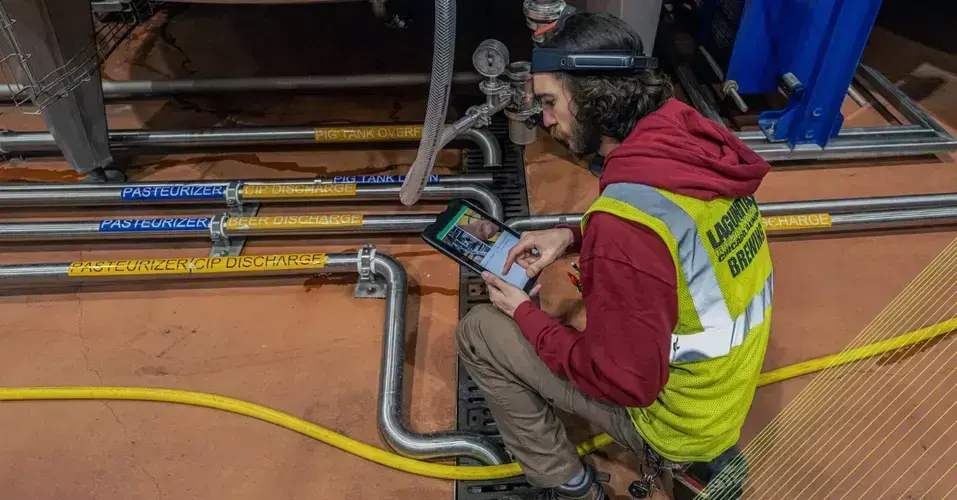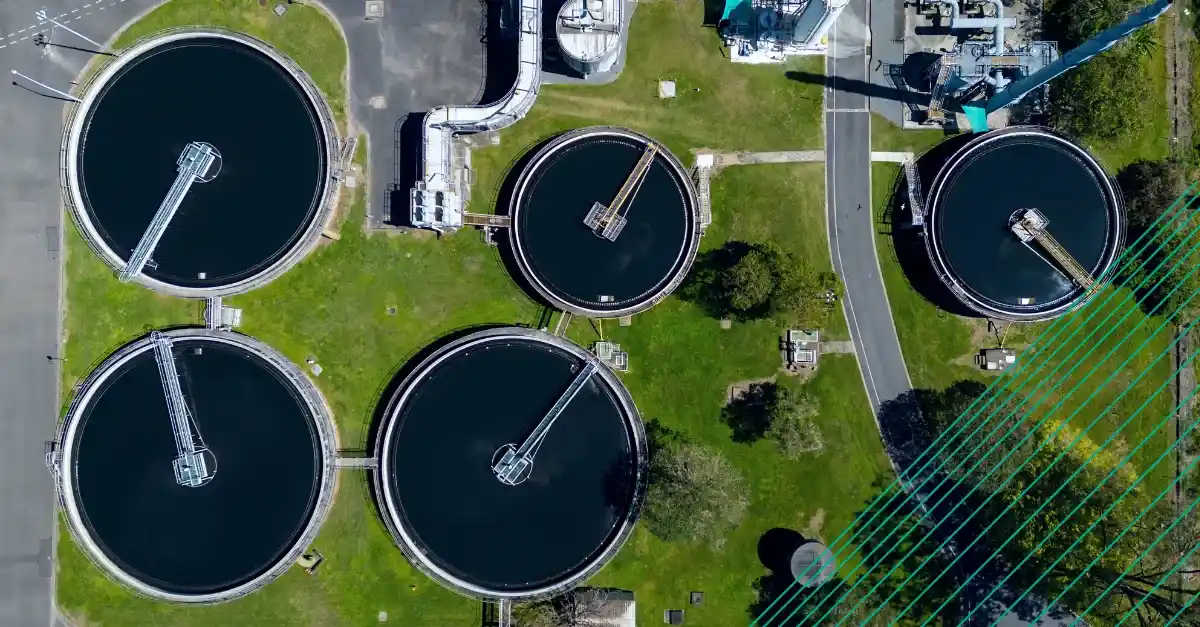

Sustainable Profitability and Less Waste with Circular Manufacturing.
How can manufacturers reduce waste and achieve sustainable profitability by implementing circular economy principles in their operations?
Today, 93% of manufacturing CEOs report that sustainability is impacting the future of their business.
According to some estimates, we need 3 Earths in order to support our consumption by 2050. There will simply not be enough raw materials to go around.
With the right attitude, motivation, and investment, sustainable practices like circular economy principles can deliver sustainable profitability while simultaneously sparing resources for better use. Many of these tactics can, in fact, be integrated into the same lean initiatives that manufacturers have been using for decades.
What is circular manufacturing?
Leaders around the world are implementing circular manufacturing methods in order to achieve sustainable profitability on the long term.
- Circular manufacturing = a model for production and consumption where waste is reduced by bringing materials back into the economy instead of discarding them.
- Sustainable profitability = the practices that help manufacturers preserve resources and reduce waste to help them be more profitable.
.png?width=1000&height=1000&name=sustainable%20profitability%20circular%20manufacturing%20(1).png)
Circular manufacturing opens up new avenues of value creation for your company by reconciling profitability with sustainability.
To put it simply - circular manufacturing saves you money while also saving the planet.
Recycle.
This is the process of reincorporating waste material - whether it’s from consumers or your own operations - back into new products.
- Example: Nespresso has a home ‘recovery’ program that allows customers to recycle their used coffee pods - grounds, plastic, and aluminum - and use a part of these reclaimed resources to manufacture new products.
- Example: A number of beverage manufacturers are using treated wastewater to brew beer. This keeps valuable resources (water) within their operations, and also reduces the amount of wasted resources. Learn more about the science behind it, here.
Reduce and Re-Make.
Reduce the novel materials you use and re-make the existing materials.
Otherwise known as remanufacturing or refurbishment, this is recreating a product with a combination or re-used, repaired, and new parts and distributing it back into the market.
This saves manufacturers from discarding (read: wasting) perfectly good parts when only a portion needs to be replaced.
Redistribute/Re-Use.
The best of both worlds - this practice describes using a product again (often in a different market) without needing refurbishment or repair.
In fast moving consumer goods models, exploring reusable packaging models can make a huge impact.
- Example:
Levis has implemented a comprehensive “waterless” program, designed to reduce the amount of water used throughout their operations. Wherein. One key component of this initiative is to re-use a large amount of the wastewater used during their dying process, rather than discarding it.
Recovery and Maintenance.
What if we could prevent a product from turning into waste in the first place?
This practice involves creating products that can easily be repaired to increase their longevity in the market.
A changing business model.
"But how doe we adopt these strategies and still make a profit?"
In order to grow, manufacturers need to sell a certain quantity of products. What are the incentives to invest in higher quality, longer lasting products? In other words, how do circular economy principles counter the traditional revenue model that relies on more, rather than less?
Saving the planet requires change.
We’re noticing a fundamental shift in the business models of those companies that want to make an impact and invest in sustainability. Rather than investing in the product themselves, they invest in the lifetime of the product.
- Example: Fairphone’s "phone-as-a-service" model offers customers a solution that makes phones that last longer and are easy to maintain and upgrade. They charge the user for the use of the phone, rather than the ownership. Instead of collecting a one time price, they are able to generate revenue throughout the long life of their product.
At every level, circular economy principles are integrated according to the following fundamental building blocks:

- Business model. The best circular economy business models will have a clear strategic rationale and business case. Like any, they need to fulfill a need and solve a problem for your client.
- Circular strategy. Select the right circular strategy, based on well-researched and realistic product and market characteristics.
- Value chain design. Successful circular economy business models don’t happen in a vacuum! Companies need to understand and define the roles and responsibilities of key players in each part of the value chain.
- Product design. Products specifically designed for distribution in a circular economy can deliver profitable leverage to a business case (think about a modular Fairphone or a recyclable coffee pod).
Operational and sustainable transformation.
Lean and green initiatives support each other if they’re well-executed - sustainability transformations and lean ways of working can work well when applied in synergy.
Getting started is often a matter of integrating sustainability initiatives with existing lean or continuous improvement programs within an organization. Note: it’s a huge bonus if manufacturers are already using tools that help standardize work and facilitate continuous improvement, as changes to standards and ways of working can be communicated more effectively.
What does this integration look like?
Check out the four examples below.

01. Use environmental KPIs in your performance cascade.
Integrating sustainability goals into a factory’s existing performance goals allows manufacturers to work towards a greener way of working at scale.
Often these KPIs are already beneficial for a manufacturer’s bottom line. Reducing waste (eg. water, plastic, etc) helps our manufacturing processes stay efficient and cost effective while also having a positive effect on the environment.
Try to identify the points in your processes where the biggest ecological footprint (energy or resource usage) exists, and start there.
02. Translate sustainability into continuous improvement and Kaizen tools.
Make a sustainable action plan and integrate it into your existing Lean optimization materials.
Not only does this provide a ready-made and transferable format for making incremental improvements to your green footprint, but it also delivers results through a methodology already familiar to everyone involved.
Examples:
- Value Stream Maps of water usage
- Mass Balance of all energy and materials into and out of a process
- A Material Waste Assessment of the organization
- Develop a Waste Reduction Action Plan (WRAP)
03. Make sustainability visible when assigning responsibility.
Plant managers, supervisors, and leaders within an organization should take every opportunity to lead by example.
Some companies already excel at integrating this culture of leadership and leveraging it for better lean results - the same principles apply with sustainability initiatives.
From an operator or shift perspective, many companies engage the workforce by assigning sustainability-focused roles to a number of individuals working on the shop floor.
In addition to their regular daily tasks, they’re also made responsible for certain key tasks relating to sustainability.
Not only does this actively work towards established goals, but it involves the frontline workers and provides more opportunities for accountability and engagement.
04. Evaluate sustainability accomplishments and share successes.
This may seem obvious, but the success of sustainable profitability - and morale in general - can hinge on effectively sharing the wins from these programs.
Clearly communicate the real impact in terms of cost, lead time, and savings. Having these figures clearly defined not only gives hope to those involved, but can be an important resource for stakeholders.
Why do initiatives fail?
"What should I look out for?"
A lot of the world’s top manufacturers set significant sustainability goals and achieve them. But at the same time, a great many more companies don’t manage to achieve, or even create, these sustainability goals.
In fact, only 2% of programs effectively deliver on the ambitions and goals originally defined.
What are the main reasons?
- A lack of resources for investment
- Having an unengaged or disinterested senior leadership
- Not prioritizing sustainability
- No accountability throughout the organizational structure
- No clear strategy or goals
Be mindful about these common pitfalls when implementing your own circular manufacturing strategies.
Want to learn more about lean manufacturing and sustainable profitability?
👉 Webinar: Sustainable Profitability. How to Leverage Circular Economy Principles in Your Operations.
👉 Introduction to Impactful 5S Standard Operating Procedures.
👉 How to continuously improve your processes in manufacturing.

This article was created in collaboration with sustainability and lean manufacturing expert Mathias Fahy from Mobius Business Redesign.
Author
Revisions
It's time to simplify frontline training
Work instructions, checklists, and skills management - all in SwipeGuide
- Cut training time by 50%
- SOC I and II compliant

